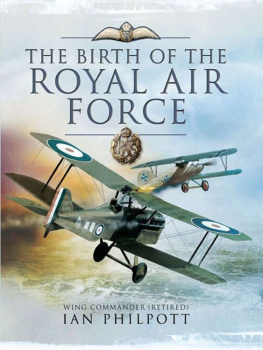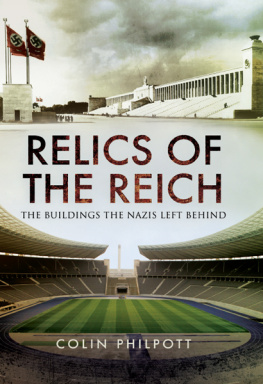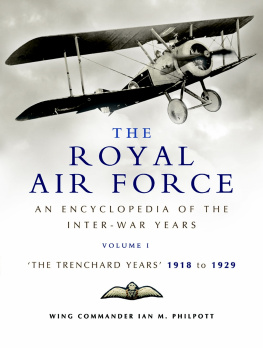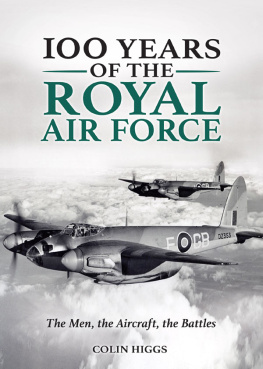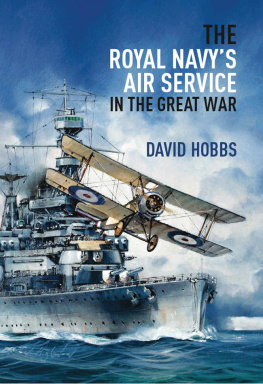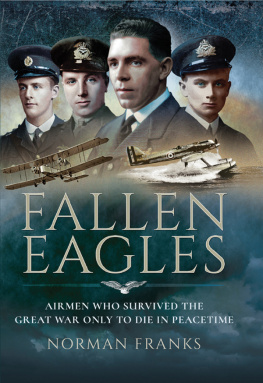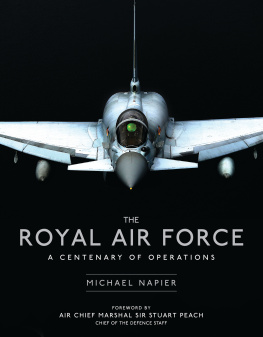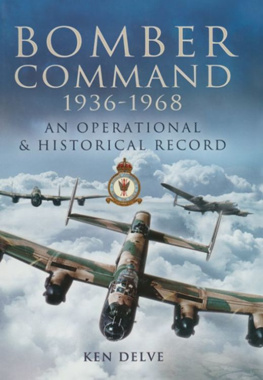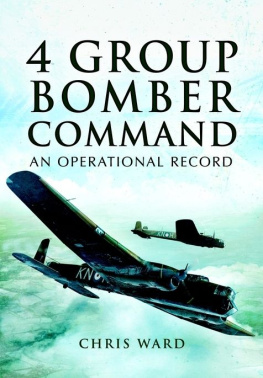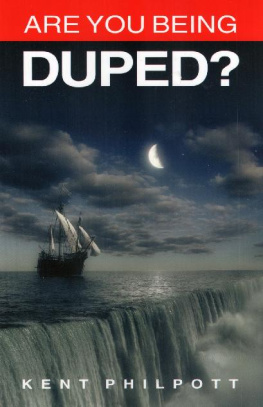

First published in Great Britain in 2013 by
Pen & Sword Military
an imprint of
Pen & Sword Books Ltd
47 Church Street
Barnsley
South Yorkshire
S70 2AS
Copyright I.M. Philpott 2013
ISBN 978 1 78159 333 2
eISBN 9781473832411
The right of I.M. Philpott to be identified as the Author of this Work has been asserted by him in accordance with the Copyright, Designs and Patents Act 1988.
A CIP catalogue record for this book is available from the British Library
All rights reserved. No part of this book may be reproduced or transmitted in any form or by any means, electronic or mechanical including photocopying, recording or by any information storage and retrieval system, without permission from the Publisher in writing.
Typeset in Ehrhardt by
Mac Style, Driffield, East Yorkshire
Printed and bound in India by Replika Press Pvt. Ltd.
Pen & Sword Books Ltd incorporates the imprints of Pen & Sword Archaeology, Atlas, Aviation, Battleground, Discovery, Family History, History, Maritime, Military, Naval, Politics, Railways, Select, Social History, Transport, True Crime, and Claymore Press, Frontline Books, Leo Cooper, Praetorian Press, Remember When, Seaforth Publishing and Wharncliffe.
For a complete list of Pen & Sword titles please contact
PEN & SWORD BOOKS LIMITED
47 Church Street, Barnsley, South Yorkshire, S70 2AS, England
E-mail: enquiries@pen-and-sword.co.uk
Website: www.pen-and-sword.co.uk
Contents
Foreword
The title of this work, The Birth of the RAF , may seem, to some, a little dramatic but there is a reason. The threat posed by German Gotha bombers in attacking targets in south-east England in 1917 increased the urgency to combine Britains two air services, the Royal Flying Corps and the Royal Naval Air Service, into one new service. Secondly, no sooner had hostilities ceased in 1918 than the Army and the Navy saw no need for the extravagance of an Air Ministry in times of austerity and demanded the return of their aeroplanes. In that case the RAF would have been stillborn. Had it not been for the intervention of Winston Churchill what might have been the outcome?
It can therefore be said that the Gotha threat brought to a head the necessity to form a unified air service under an Air Ministry. The government was, by 1917, already well advanced in bringing about the RAF. The work of the Joint Air Board came about following the realization that there had be one air service with the ability to make decisions that would be binding on both the Admiralty and the War Office to prevent waste and duplication and to make rapid decisions regarding the output of aircraft and aero engines. It is fair to say that if the threat posed to the south-east of England in 1917 by German Gotha bombers had been eliminated, or at least severely limited at that time, the creation of the RAF might well have been deferred until after the war when the urgency would have diminished. Be that as it may there were so many civilian casualties in Folkestone in just one raid that questions were asked in the House of Commons about the perceived inability of the air defences to prevent these raids. RFC squadrons were having to be diverted from their duties on the Western Front to stiffen up the air defences of the London area. No.56 Squadron, for example, was relocated to Bekesbourne just outside Canterbury but the pilots kicked their heels for a fortnight before being returned to Flanders. As soon as they had gone the Gotha raids resumed. The C-in-C of the British Expeditionary Force, Field Marshal Haig, was losing his aeroplanes at a time not of his choosing; tension was rising between him and the Committee of Imperial Defence and the Prime Minister, Lloyd George, was obliged to call upon a member of the War Cabinet, General Jan Smuts, to find a solution to the problem. To cut a long story short, and its to be found in this encyclopaedia, the General came up with the solution that everything that flew must belong to one service and that would have to be an air service. The Smuts Report was translated into legislation and a third service, the Royal Air Force, came into existence on 1st April 1918. This was no mean achievement in the middle of a war. There was a major Gotha raid in May 1918 but by that time the air defences were much improved and the losses of Gothas was so high that the raids on British airspace ceased. But by that time the RAF was already in existence. Had the success against the Gothas been achieved in, say late 1917, it might have been a different story.
The Royal Air Force, which came into existence on 1 April 1918, was principally a fusing of two services, the Royal Flying Corps and the Royal Naval Air Service. This is the history of the development of these two services in the period leading up to the outbreak of the Great War and their employment on operations. The new RAF was therefore very much a product of those experiences. This included the calibre and operational experience of those who would occupy the very top posts, the quality of the staff officers, aircrews and ground crews and the design and efficiency of the aeroplanes which became the property of the Air Ministry overnight. Perhaps one of the most surprising turn of events was the leading role played by the RNAS in strategic bombing, from the very outbreak of the war and well before Air Marshal Trenchard commanded the Independent Bombing Force in France in the summer of 1918. But then again the RAF V bombers, which were designed with strategic nuclear weapon capability during the Cold War, were replaced by submarine-launched Polaris missiles. In this case we may say that strategic bombing started and finished as the responsibility of the Royal Navy, but such a statement could spark a furious argument so I will leave that for others to judge.
Ian Philpott RAF Retd
Preface
The following is a War Office specification for a powered aircraft before the Great War. It speaks for itself and shows how far we have come since those very early days:
The machine must have a carrying capacity sufficient to carry an operator (pilot) and a passenger (observer), both weighing an average of 170lbs. The instruments/maps etc must have an average weight of 10lbs. There must be fuel for a journey of 4 hours. It must be capable of rising from or descending on to any ordinary open space of grass land or fairly smooth ground of an area of 10 acres, without damage to itself or occupants. It must have an average speed in the air of not less than 25mph in a calm, which speed it shall maintain for not less than an hour. It must be capable of rising with its full load to a height of 2,000ft above its starting point, and be able to carry its full load at heights of 5,000ft above Mean Sea Level. It must be reasonably steady when under flight, in order that observation with field glasses may be made from it and must be capable of remaining in the open in all ordinary weather for a period of one month without very material deterioration. It must be capable of flights of 2 hours duration during which time it must describe several circles of varying diameters and must be capable of being kept in the air hovering or circling over any desired point for periods of a minute or more. It shall be so constructed that if the engine stops from any cause, or any portion of the machinery breaks down, there shall be a reasonable chance of the occupants reaching the ground in safety.
This encyclopaedia seeks to capture the spirit of the very early days of flying whether it be in a balloon, dirigible or airship or a powered flying machine with wings to take the reader through a world war where aircraft will leave their stamp on the conduct of war. Many books have been written about the war in the air between 1914 and 1918. What makes this one different is that it is essentially a reference book in which the reader can embark on specific areas of study or simply check on facts, figures and the like. This work seeks to give a detailed account of the development of air power which added a new dimension to warfare beginning with the use of balloons then airships in military operations and peacetime military manoeuvres. The chapters in lead to the formation of the Royal Air Force on 1 April 1918 and end with a consideration of the use of aircraft in the strategic bombing role. This is important for it helps us to understand why military aviation experts in the immediate post-war period made what some would regard as extravagant claims for the pre-eminence of air power in war. Those whose names come to mind in this respect include the Italian Douhet, the American aviator Billy Mitchell and Air Marshal Trenchard of the Royal Air Force. With the benefit of hindsight one can see that victory in war has never been achieved solely through the use of air power but in the early years of the twentieth century air power was a new, and for some, a frightening new development in war, involving as it did civilians far from the battlefield.
Next page
